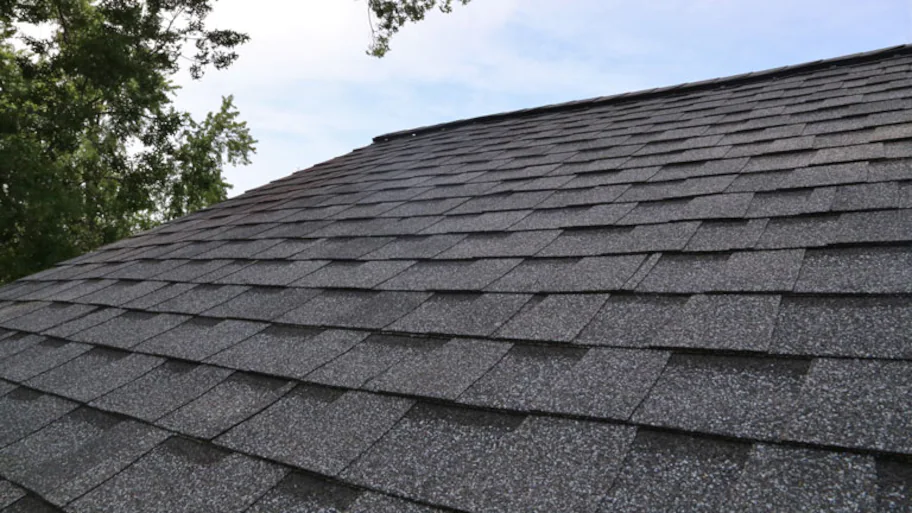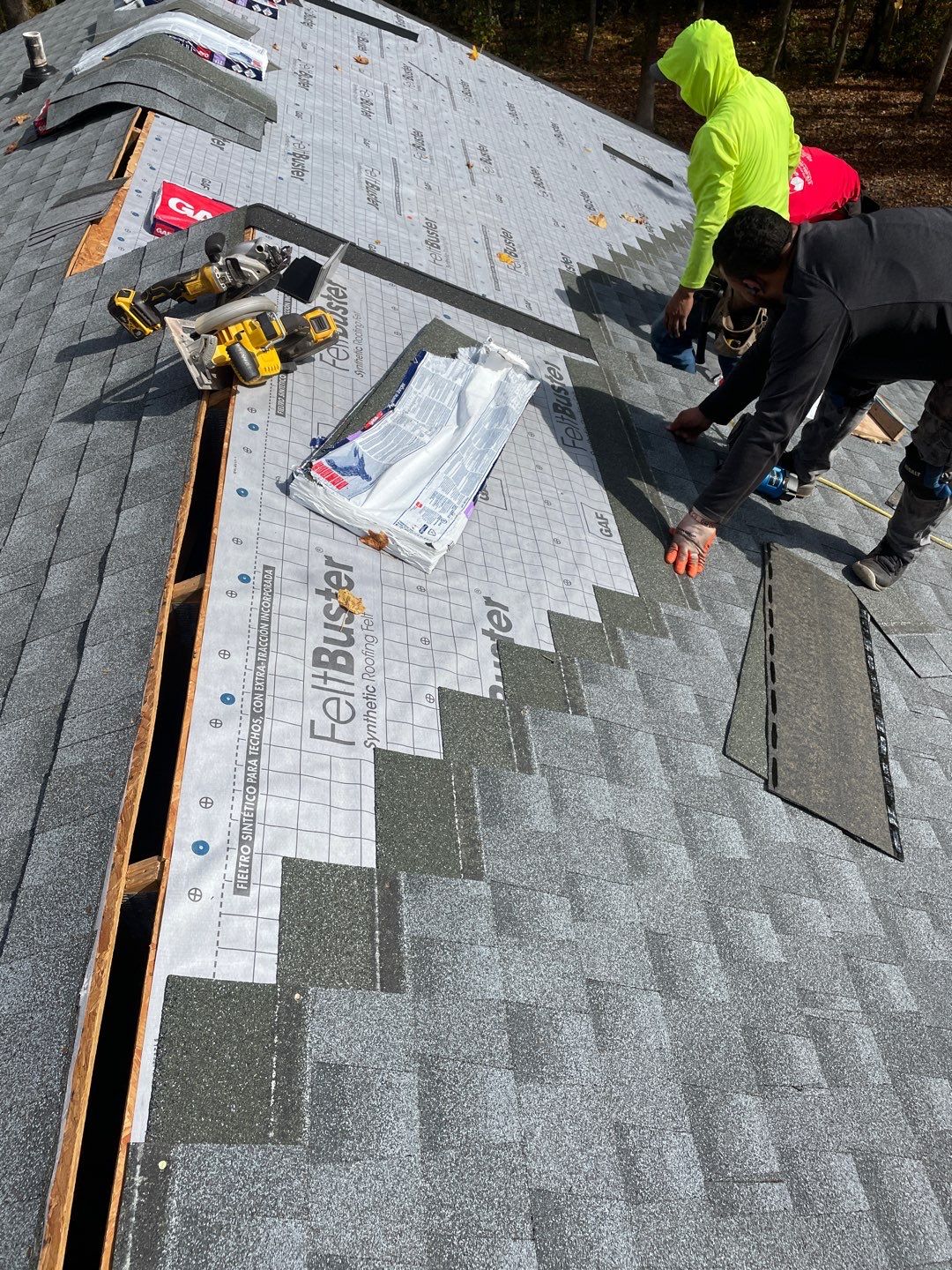The Benefits of Working with Gainesville FL Roofing Companies
Finest Practices for Ensuring Correct Roof Ventilation
Making certain appropriate roofing air flow is essential for the long life and efficiency of a roof. A balanced consumption and exhaust vent proportion, frequently 1:300, plays a critical function, with intake vents preferably placed at the lower side of the roofing for great air access and exhaust vents at the height for warm air leave. Normal examinations to determine obstructions and preserve clear airflow are extremely important. Moreover, keeping insulation away from vents is important to protect against airflow constraint. Comprehending these fundamental components establishes the stage for more thorough understandings into setup and upkeep techniques that can substantially boost your roof system's performance.
Understand Ventilation Fundamentals
Properly recognizing air flow basics is crucial for guaranteeing the durability and effectiveness of roofing systems. Efficient ventilation alleviates wetness build-up and temperature level extremes in the attic room, both of which can result in considerable architectural damages in time. A well-ventilated roofing assists in protecting against typical problems such as mold and mildew growth, wood rot, and ice dams, which can endanger the honesty of the roof products and the underlying structures.
The main goal of air flow is to help with the motion of air, enabling for a constant exchange in between the interior and exterior atmospheres. This balance is achieved via a combination of intake and exhaust vents that function together to maintain optimum air flow. Intake vents, normally located along the eaves or soffits, permit fresh air to go into the attic room area, while exhaust vents, frequently positioned at or near the roof covering ridge, allow warm, humid air to escape.
Trick elements affecting the efficiency of roof air flow consist of appropriate positioning, ample sizing, and making certain that both intake and exhaust vents are unblocked. Normal assessment and maintenance are vital to recognize prospective blockages, damage, or ineffectiveness in the ventilation system, therefore protecting the roof covering's performance and resilience.
Kinds of Roof Vents
Roof covering vents play an important function in maintaining efficient attic ventilation and, by expansion, the overall wellness of the roofing system. Different kinds of roofing system vents are available, each with one-of-a-kind benefits tailored to certain roofing needs. Ridge vents, for example, are set up along the roofing's optimal, allowing cozy, damp air to get away from the attic room. They offer constant ventilation and mix flawlessly with the roofline, making them both effective and aesthetically pleasing.

Soffit vents are mounted under the eaves and work in tandem with roofing vents to make sure a balanced intake and exhaust system. By allowing cooler air to enter from below, soffit vents assist in the expulsion of warm air with upper vents. Gable vents, situated on the exterior walls of the attic room, offer one more reliable option, particularly in homes with saddleback roofs.
Evaluate Your Current Ventilation

Following, think about the age and condition of your roofing materials and air flow components. Older systems might not abide by present building regulations or might have worn away gradually, reducing their performance. Conduct a comprehensive exam to determine any kind of indicators of damage, such as rust, damages, or spaces that might compromise the system's performance.
Furthermore, measure the attic room temperature and humidity levels. Heats and moisture can suggest inadequate air flow - roofing companies. Make use of a hygrometer and thermostat to obtain precise analyses, contrasting them with exterior conditions. Consistent inconsistencies suggest possible issues that need dealing with.
Installation Best Practices
Reliable installation of roof ventilation systems is critical for guaranteeing ideal efficiency and durability. Proper setup begins with comprehending the particular air flow demands of the structure and the roof covering it covers. This entails computing the appropriate ratio of intake to tire vents, generally adhering to the 1:300 guideline, which states one square foot of ventilation for each 300 square feet of attic floor space.

Intake vents ought to be set up at the roofing's lower edge, frequently in the soffits, to allow trendy air to get in. Exhaust vents, on the various other hand, ought to be mounted near or at the roof covering's top to assist in the leave of cozy, damp air.
Seal all air vent connections thoroughly to prevent air leaks and possible water seepage. Use top quality materials and comply with supplier standards to guarantee resilience and efficiency. Furthermore, incorporating hop over to here ridge vents with baffles can considerably enhance airflow efficiency by stopping wind-driven rain and snow from entering the attic.
Ultimately, accurate installment of roof covering air flow systems minimizes potential problems such as mold and mildew growth, ice dams, and architectural damage, ensuring the roof's integrity and the structure's overall health.
Regular Upkeep Tips
Consistency in upkeep methods is fundamental to making sure the lasting efficiency of roof covering ventilation systems. Throughout these inspections, make certain that vents are cost-free of particles, nests, and other blockages that could hamper air flow.
Utilize a soft brush or a vacuum cleaner to eliminate dirt and particles from intake and exhaust vents. Be cautious not to damage the vent displays or louvers during the process.
Appropriate insulation is just as important. Guarantee that attic insulation does not block the vents, as this can severely restrict airflow. If any type of insulation has actually changed or worked out, reposition or replace it to maintain an efficient obstacle.
Lastly, replace any damaged or missing out on elements without delay. Busted vents, cracked roof shingles, or shabby flashing can all contribute to inadequate ventilation and should be dealt with immediately. Regular upkeep ensures that the roofing ventilation system functions efficiently, thereby extending the lifespan of the roof itself.
Verdict
Guaranteeing correct roofing air flow is vital for keeping the effectiveness and resilience of a roofing system. Adherence to the 1:300 consumption and exhaust air vent ratio, combined with the critical placement of vents, is vital.
A well balanced intake and exhaust vent ratio, generally 1:300, plays a crucial duty, with intake vents preferably put at the lower side of the roof covering for trendy air entrance and exhaust vents at the optimal for warm air leave. Intake vents, normally located along the eaves or soffits, enable fresh air to go into the attic room space, while exhaust vents, typically positioned at or near the roof ridge, allow hot, humid look at more info air to escape.
Soffit vents are set up under the eaves and job in tandem with roof vents to make sure a balanced consumption and exhaust system. By allowing cooler air to enter from below, soffit vents help with the expulsion of warm air via top vents. Adherence to the 1:300 consumption and exhaust air vent ratio, coupled with the tactical placement of vents, is important.